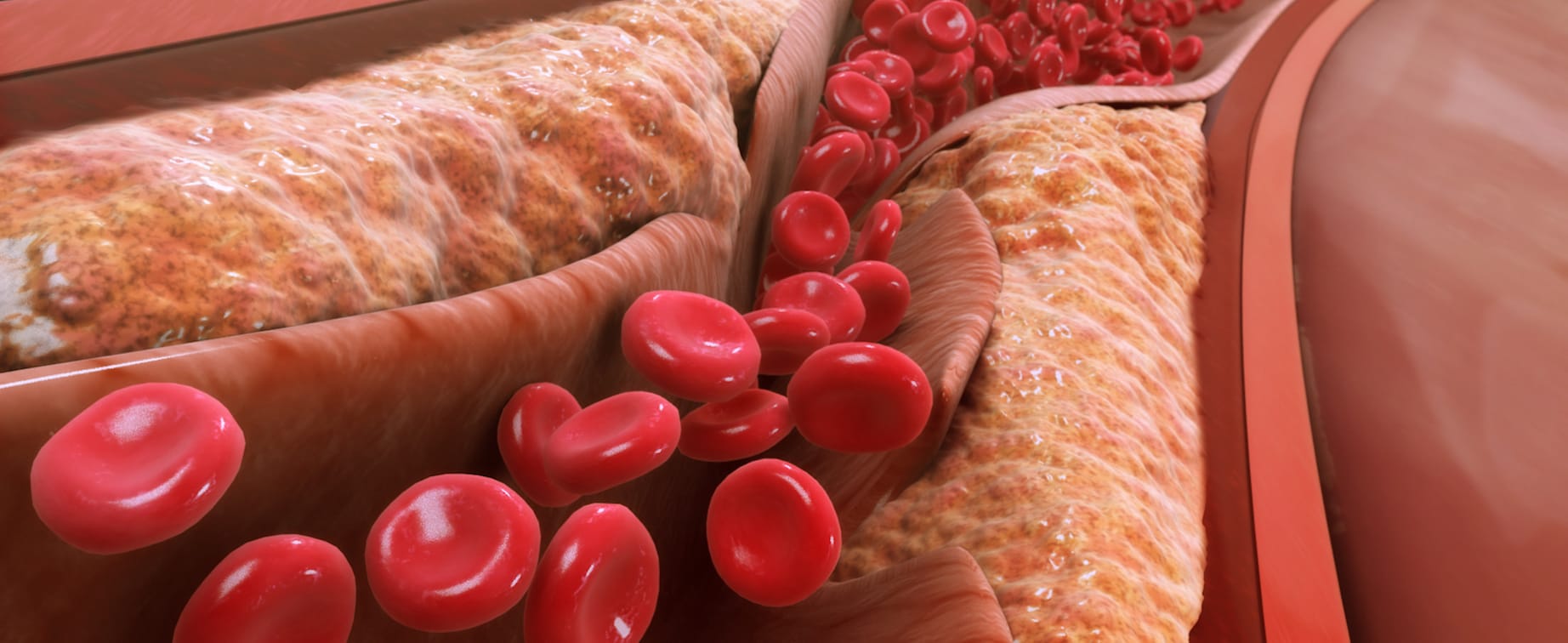Table of Contents
What is High Cholesterol?
High cholesterol is one of the most common health problems in the United States, affecting more than 94 million adults. [1] This condition is also symptomless, so many people that have the condition may be unaware until it causes a serious complication.
Cholesterol itself is a lipid, which is a type of fat. It is a wax-like substance that is naturally produced by your liver to create certain hormones and cell membranes. [2] Although cholesterol has an important function, it can also cause you harm. When a person has high levels of cholesterol, the substance can build up and cause blockages in your arteries. It is these blockages that lead to complications such as heart attack, heart disease, and stroke.
The risk of high cholesterol increases as you get older. It is recommended that all adults older than 20 have their cholesterol levels checked every four to six years. [3] Along with age, other factors can also increase your risk of this condition. One of the major risk factors for high cholesterol is being overweight or obese. Another key risk factor is diet. Eating high levels of saturated or trans fats, foods, processed meat, and sugary desserts can also increase your cholesterol levels. Other risk factors can include smoking, physical inactivity, certain medical conditions, or having a family member with high cholesterol. [4]
Get savings updates for Lipitor
Once you have been diagnosed as having high cholesterol, it can be treated properly. Firstly, you should make lifestyle changes such as improving your diet to help naturally lower your cholesterol levels. Additionally, prescription medications such as atorvastatin (Lipitor), rosuvastatin (Crestor), and ezetimibe (Zetia) can help to reduce your cholesterol levels.
Although having high cholesterol is bad for your health, not all cholesterol is bad. Keep reading to learn about the different types of cholesterol and the impact they have on your health.
LDL or low-density lipoproteins are also called “bad” cholesterol. When people talk about having high cholesterol, they are often referring to your overall cholesterol levels. However, high levels of LDL are also known as high cholesterol, regardless of your other cholesterol levels. More than one-third of American adults have high levels of LDL. [5] Cholesterol is needed all around the body to fulfill its function. However, it is unable to travel through the bloodstream by itself. As well as creating cholesterol, your liver also creates particles known as lipoproteins. These lipoproteins are used to carry cholesterol and other lipid fats through the bloodstream to where they are needed. On occasions when your body has excess LDL cholesterol, it can collect and build up in your arteries. This causes atherosclerosis or cholesterol plaque. This accumulation of plaque causes your arteries to become narrow in places, limiting and reducing blood flow. This increases your risk of blood clotting, which can cause serious complications. If a blood clot blocks an artery in your brain or heart, it can cause a heart attack or a stroke. Additionally, a build-up of cholesterol can reduce the amount of oxygen that flows into your organs, leading to oxygen deprivation. [6] While LDL is known as “bad cholesterol,” HDL is the opposite. HDL or high-density lipoproteins are also known as “good cholesterol.” This “good cholesterol” can help reduce problems caused by LDL and lower the risk of developing heart disease, heart attack, and stroke. Once again, “good cholesterol” is unable to travel around the body unaided. Lipoproteins are still needed for this process. However, HDL transports excess cholesterol back to the liver, where it can then be broken down and removed from the body. By helping your body to get rid of excess LDL cholesterol, it makes it less likely that there will be a build-up of cholesterol plaque in the arteries. Unfortunately, HDL is unable to completely remove all amounts of LDL from the arteries. Between HDL can carry between one-third and one-quarter of cholesterol. While high cholesterol is a serious condition and is not something that anybody wants, higher HDL levels may actually be better for your health. [7] Triglycerides are not a type of cholesterol; however, they are often linked as they are also a type of lipid (fat). Triglycerides are actually the most common form of fat in the body and are used to store energy that is gained by eating food. When we eat more calories than the body needs to function, your body converts these calories into triglycerides, increasing your triglyceride level. Later on, when your body requires energy, hormones release these triglycerides from fat cells to be used. [8] Having high levels of triglycerides and high levels of LDL or low levels of HDL contribute to the likelihood of heart attack and stroke. High levels of triglycerides can also be an indicator of other conditions, including type 2 diabetes, hypothyroidism, and metabolic syndrome. [8] The content in this article is intended for informational purposes only. This website does not provide medical advice. In all circumstances, you should always seek the advice of your physician and/or other qualified health professionals(s) for drug, medical condition, or treatment advice. The content provided on this website is not a substitute for professional medical advice, diagnosis, or treatment.
What is LDL?

What is HDL?

What are Triglycerides?
